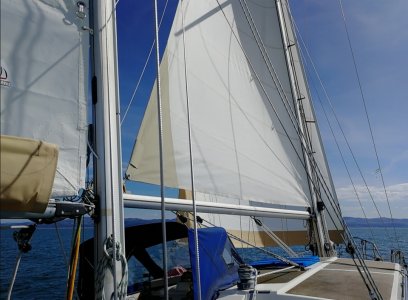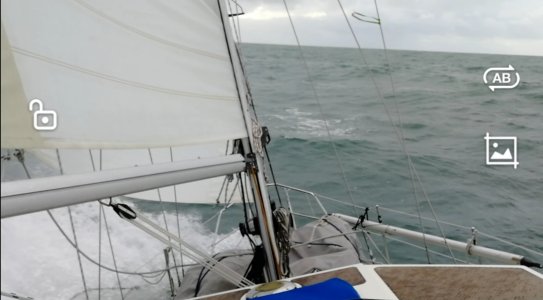Tranona
Well-known member
It is actually a furling mainsail that the OP is asking about which makes most of the suggestions largely irrelevant except post#2 which gives the suggested %age reduction in sail area at each reef - approx 20%, then 40% finally 55%.Does it actually matter? I'm not a student of fluid dynamics but I would doubt that the forces exerted are proportional to the sail area, or even easily predictable. Unless you have a continuous system such as a furling main, the reef is always going to be a bit too little or too much. All I need is a reef available for the strongest I am likely to be out in and either one or two reefs available for the intermediate blows, which may as well be evenly spaced for aesthetic reasons.
As the OP points out when of the big advantages of a furling sail is that the area is infinitely variable so avoiding predetermined fixed sail area. However some people find it useful (as with furling genoas) to have markers on the foot that equate to the fixed areas of slab reefs (or in the case of foresails fixed types of sails - genoa, working jib No2 etc). Having had 2 boats with furling mainsails I never felt the need for this - if a reduction was too much, let a bit out, too kittle, wind a bit more in. I can however see the advantage if leaving the job of sail reduction to a crew member. "wind in until the first marker" is a simple instruction. However as a "usually) solo sailor I never felt the need for such an instruction to myself!
Now owning a boat with slab reefing I suppose I shall have to re-learn how to deal with the complication and live with the constraints of fixed mainsail sail areas, as well as how to get the best out of a twin headsail rig1


